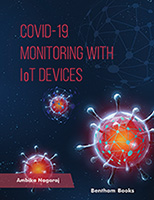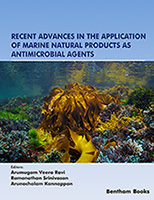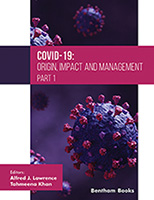In 2009 the Brazilian scientific community, especially those involved in biomedical sciences, are celebrating what has been considered, up to now, the most important contribution of Brazilian science: the description, in a seminal paper published by Carlos Chagas (Nova Tripanozomiase Humana: estudos sobre a morfolojia e o ciclo evolutivo do Schyzotrypanum cruzi n. gen., n. sp., ajente etiolojico de nova entidade morbida do homem. Mem. Inst. Oswaldo Cruz 1 (2): 159-218, 1909) of what we presently know as Trypanosoma cruzi and Chagas’ disease. In addition to the description of a new genus and a new species, initially designated as Schyzotrypanum cruzi, Chagas identified a new disease. Later on this disease was named Chagas’ disease or American Trypanosomiasis. Chagas showed that the protozoan was transmitted by insects of the Reduviidade family to man and other mammals and he established the basic data of the lifecycle of the protozoan. Nowadays, the contents of the original paper are still a source of inspiration for those working on this subject. Since the original description thousands of papers have been published dealing with T. cruzi and Chagas disease. From a balance of these papers we can see that some changes have taken place, even in the Portuguese language. Indeed, some words at the time written with the letter j (morfolojia, ajente, etiolojico) are now written with the letter g (morfologia, agente, etiológico). It has been shown that the process of intracellular division of T. cruzi is not a schizogonic process, which takes place in members of the Apicomplexa Phylum. Therefore, the protozoan does not belong to a new genus Schyzotrypanum but to the previously known genus Trypanosoma. However, in view of some peculiarities shared with other species such as T. dionisii, T. myoti and T. vespertilionis among others, we still use the word Schyzotrypanumas indicative of a sub-species Trypanosoma(Schyzotrypanum) cruzi.
Since the initial description of T. cruzi thousands of papers dealing with the protozoan itself and with the disease caused by it have been published by the Brazilian scientific community. In view of some characteristics of the parasite, including (a) its differentiation process, (b) the morphology of the kinetoplast and (c) the ability to infect most of the mammalian cells, T. cruzi is considered a classical biological model. Indeed, the modern Cell Biology, Biochemistry, Molecular Biology, Immunology and Pathology in Brazil grew using T. cruzi and Chagas disease as experimental models. It is important to point out that Brazilian agencies supporting scientific activity stimulated research in this area. Programs such as the Programa Integrado de Pesquisas em Doenças Endêmicas (PIDE) (Integrated Programme of Research on Endemic Diseases) played a major role on the advances of research activities in Brazil in Chagas’ disease area. Subsequently, the World Health Organization created a similar program (TDR). Taken together, the existence of these programs stimulated the Brazilian scientific community to work with T. cruzi and Chagas disease. This in part explains why Brazilian Parasitology now occupies the third position in the world when we consider the number of papers published in international journals, while in other areas of science we occupy the tenth or eleventh position.
During all these years intense research activity took place in Brazil. Specialized scientific meetings were organized, such as the Caxambu meeting, which was recognized as the most important one in this field, attracting colleagues from different countries to Brazil every year. Thanks to these efforts the Brazilian health authorities launched special programs to control the reproduction of the insects which transmit T. cruzi inside houses, mainly in the rural areas. As a result, the number of new cases of Chagas’ disease was drastically reduced. This important achievement led some authorities to believe that Chagas disease was no longer a health problem in Brazil. However, this is a complete misunderstanding of the dynamics of parasitic diseases caused by protozoa and transmitted by insects. In spite of the optimistic view of some health organizations and health authorities, caution must predominate in this case. It is important to remember that many parasitic diseases, including Chagas’ disease, are caused by protozoa which infect several insect species and with multiple animal reservoirs. Successful elimination of one species, as happened with Triatoma infestans, the main vector involved in Chagas’ disease transmission in Brazil, may lead to the occupation of vacant niches by other triatomine species. As an example, infected Panstrongylus megistus was recently found by Ana Jansen and co-workers inside residences of neighbors to the Primatology Center of Rio de Janeiro, located only 100 km from Rio de Janeiro city. In addition, 26.5% of the 198 non-human primates from 18 species of 8 genera housed at this Primatology Center are also infected. Another important example comes from the finding that 64% of the nonhuman primate Leontopithecus rosalai adults, known as the golden lion tamarins, captured in the Poço das Antas National Park, localized only 60 km from Rio de Janeiro, are infected with T. cruzi. The parasite found by Jansen and co-workers in the golden lion tamarins belongs to the type II lineage, which in Brazil is usually associated with human cases of Chagas’ disease. Since (a) National Parks are sites where animal life must be preserved; (b) T. cruzi circulates among vertebrate and invertebrate hosts living in such parks; (c) sylvatic species may adapt to an anthroponotic transmission, and reinvasion of insects from sylvatic transmission cycles is a problem to control Chagas’ disease; (d) contact between wildlife, domestic animals and humans is a consequence of the increase in habitat fragmentation, intensified hunting, ecotourism projects and management practices, we can conclude that it is almost impossible to eradicate the parasite. Taking into consideration that (a) there are no vaccines against T. cruzi; (b) there are no efficient drugs to kill the protozoan; (c) several basic questions about mechanisms of interaction of the parasite with the hosts have not yet been solved and (d) that this parasite is an important experimental model to study basic biological processes, including cell differentiation, parasite-vector interactions, RNA-editing, RNA-splicing, extranuclear DNA organization and function, among others. It would be a tremendous and serious mistake to reduce the priority and the funds available for research on Chagas’ disease based on the false assumption that the disease will be eradicated.
Thanks to the efforts of the Brazilian community research activity in T. cruzi biology and Chagas disease takes place in several laboratories in Brazil. This book, organized by Antonio Teixeira, covers all areas of research, from the structural organization of T. cruzi to the perspectives in drug development and therapy of Chagas disease. Certainly, this initiative is a hallmark of the commemoration of the centennial anniversary of the discovery of Trypanosoma cruzi and Chagas disease.
Wanderley de Souza
Federal University of Rio de Janeiro





